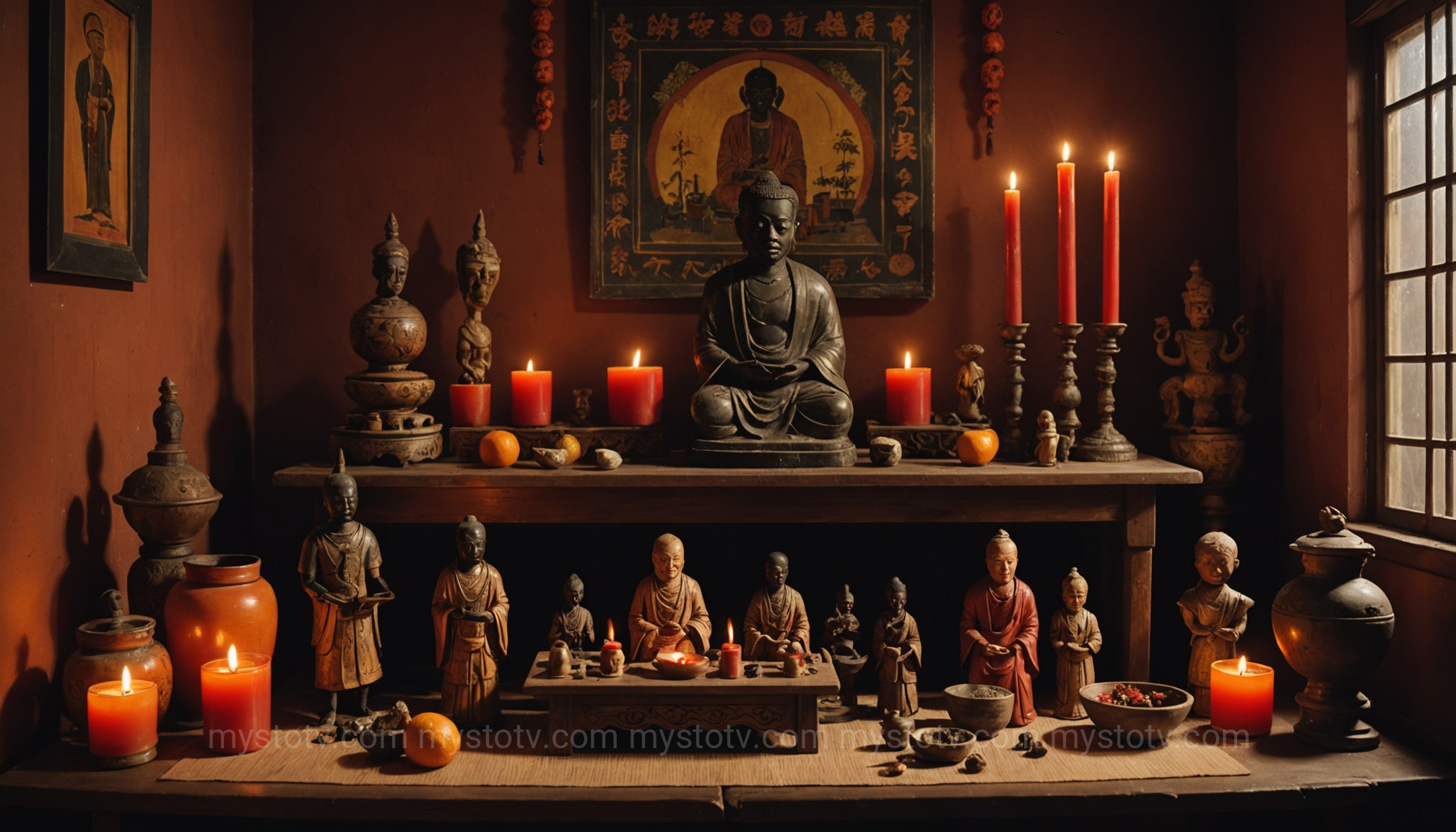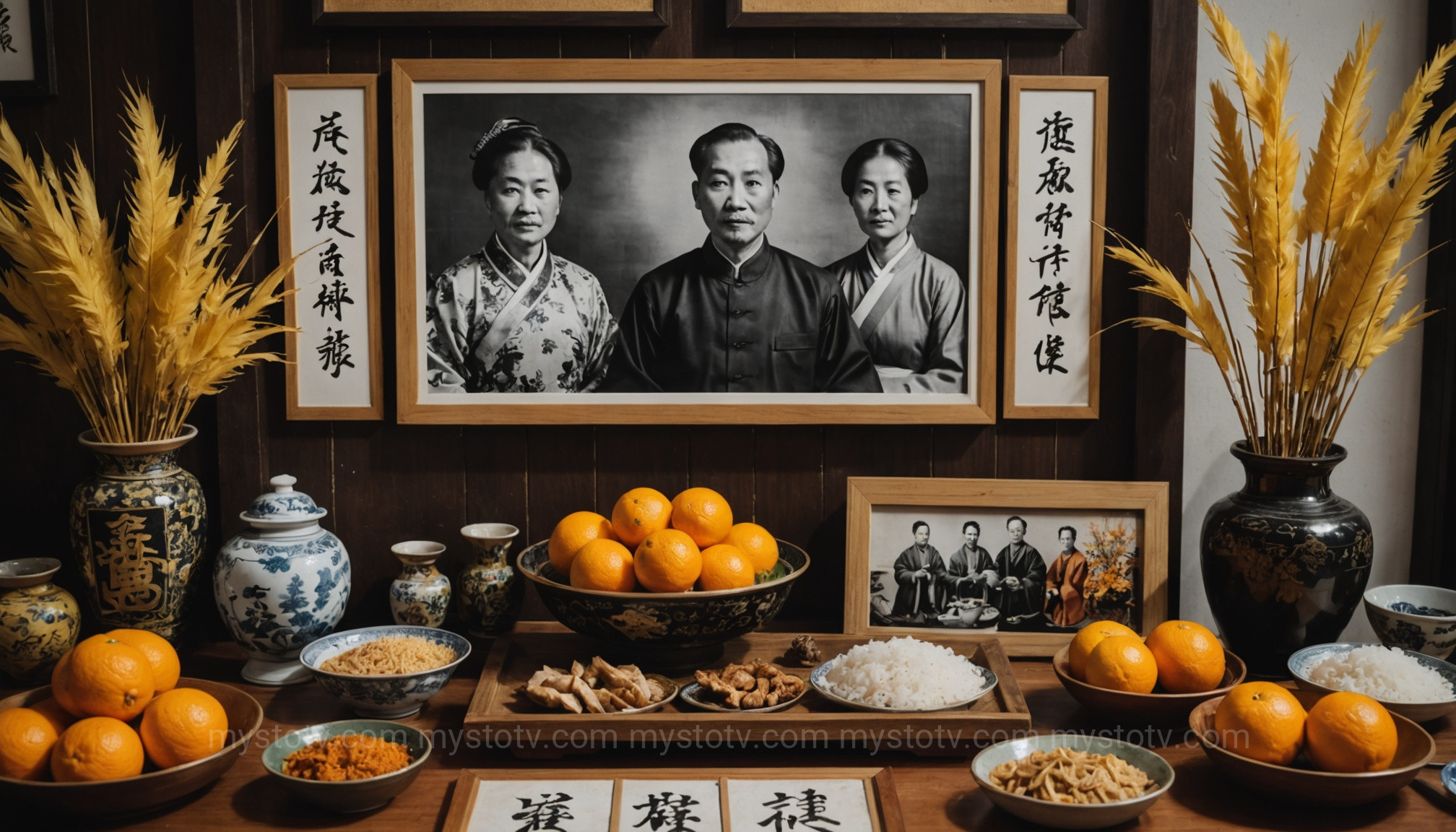Across the globe, from the bustling cities of Asia to the vibrant communities of Africa, the connection between the living and the dead forms a cornerstone of cultural and spiritual life. This connection is most profoundly expressed through ancestor worship practices, a diverse set of beliefs and rituals centered on the idea that deceased family members continue to exist and influence the mortal world. Far from being a monolithic religion, these practices represent a deeply personal and culturally specific way of honoring lineage, seeking guidance, and maintaining social harmony. Understanding the nuances of ancestor worship practices is essential for appreciating the rich tapestry of human belief systems and the enduring power of family bonds that transcend even death.
Contents
- 1 The Core Tenets: Understanding Ancestor Worship Practices
- 2 A Look at Ancestor Worship Practices in Asia: Filial Piety and Lineage
- 3 Exploring Ancestor Worship Practices in Africa: Community and Spiritual Intercession
- 4 Comparative Analysis: Shared Themes and Divergent Rituals in Ancestor Worship Practices
- 5 Conclusion: The Enduring Relevance of Ancestor Worship Practices
The Core Tenets: Understanding Ancestor Worship Practices

At their heart, all ancestor worship practices are built upon a fundamental belief: that ancestors are not gone, but have merely transitioned to another state of being. They remain integral members of the family and community, existing in a spiritual realm from which they can observe, guide, and interact with their living descendants. This belief system reframes death not as an end, but as a transformation of one's role within the perpetual chain of lineage. The analysis of these practices reveals a worldview where the past is not a foreign country but an active, present force shaping daily life, morality, and destiny.
The Role of Ancestors: Guardians and Intermediaries
In most traditions, ancestors occupy a powerful and dualistic role. They are seen as guardians, protectors of the family who ward off misfortune and ensure prosperity. At the same time, they often serve as crucial intermediaries between the living and a higher deity or the divine realm. Descendants may pray to their ancestors, but in many cases, they are praying through them. This positions the ancestors as the most accessible and invested spiritual advocates a person can have. This belief profoundly influences social structures, reinforcing respect for elders who will one day become revered ancestors themselves, thus creating a cycle of reverence and responsibility.
The Concept of Reciprocity in Ancestral Veneration
A critical aspect of ancestor worship is the principle of reciprocity. The relationship between the living and the dead is not one of passive remembrance but of active, mutual exchange. The living have a duty to remember, honor, and provide for their ancestors through rituals, offerings, and prayers. These offerings can range from food and drink to symbolic money and other goods needed in the afterlife. In return, the ancestors are expected to bestow blessings, such as health, fertility, and good fortune, upon their descendants. If neglected, ancestors may become displeased and withdraw their protection or even cause trouble. This reciprocal dynamic ensures that the practices remain a vital and consistent part of family life, as the well-being of the living is seen as directly linked to the happiness of the dead.
A Look at Ancestor Worship Practices in Asia: Filial Piety and Lineage
In many parts of Asia, particularly within the sphere of Chinese cultural influence, ancestor worship practices are deeply interwoven with the concept of family lineage and the virtue of filial piety. The continuity of the family line is paramount, and honoring one's progenitors is considered one of the highest moral duties. These traditions are not merely religious; they are a social framework that has structured family life and ethics for millennia.
China's Filial Piety: The Confucian Roots of Ancestor Worship Practices

The bedrock of Chinese ancestor veneration is xiao (孝), or filial piety, a core tenet of Confucianism. This virtue dictates a profound respect and duty not only to living parents but also to deceased ancestors. The practice is most visibly expressed through dedicated home altars, where ancestral tablets (wooden plaques inscribed with the names of the deceased) are housed. Families make daily or regular offerings of incense, food, and tea. Major festivals like the Qingming Festival (Tomb-Sweeping Day) and the Ghost Festival see families travel to cemeteries to clean gravesites, make elaborate offerings, and burn joss paper—symbolic money and luxury goods—for the ancestors to use in the afterlife. This meticulous care is believed to ensure the ancestors' comfort and, in turn, their continued blessings upon the family.
Japan's Syncretic Approach: Shinto and Buddhist Rituals
Japanese ancestor worship practices provide a fascinating example of religious syncretism, blending native Shinto beliefs with imported Buddhist traditions. In Shintoism, deceased family members can become kami, or revered spirits, who protect the family. After death, however, funeral rites are typically Buddhist. Most Japanese homes maintain a butsudan, a Buddhist altar for the ancestors, where family members pray and make offerings of rice, water, and incense. The most significant event is the Obon festival in August, a three-day period when the spirits of ancestors are believed to return to visit their living relatives. Families light lanterns to guide the spirits home, perform traditional dances (bon odori), and set food offerings out before eventually guiding the spirits back to their world, often with floating lanterns on a river.
Exploring Ancestor Worship Practices in Africa: Community and Spiritual Intercession
Across the vast and diverse continent of Africa, ancestor worship practices are often characterized by their deep integration into the social and political fabric of the community. Here, ancestors are not just family guardians but foundational figures of the clan or ethnic group. They are the keepers of tradition, the arbiters of justice, and the primary link to the spiritual world, making their veneration a matter of both personal piety and civic responsibility.
West African Traditions: The Yoruba and the Egungun

Among the Yoruba people of West Africa (primarily in Nigeria and Benin), ancestors (Ara Orun, or "people of heaven") are considered active members of the community who remain deeply interested in the affairs of their descendants. Rituals often begin with libations—the pouring of water or alcohol onto the earth—as a way of sharing a drink with the ancestors and gaining their attention. A spectacular manifestation of these beliefs is the Egungun festival, a masquerade where elaborately costumed dancers embody and channel the spirits of specific ancestors. The Egungun moves through the community, speaking with a disguised voice, offering blessings, settling disputes, and reminding the living of their heritage. This is not a performance but a literal, temporary return of the dead, reinforcing the idea of a seamless community of the living and the departed.
Southern African Beliefs: The Zulu and the 'Amadlozi'
For the Zulu people of Southern Africa, ancestors, known as the Amadlozi, are the primary intermediaries to the distant creator god, uNkulunkulu. It is believed that the Amadlozi must be appeased and honored to maintain a state of well-being. Communication happens primarily through dreams, divination performed by a spiritual healer (isangoma), and through ritual sacrifice, often of a goat or a cow. The spilling of blood is seen as a powerful way to nourish the spirits and establish a connection. The well-being of the entire homestead or clan depends on maintaining a positive relationship with the Amadlozi, making these ancestral rituals central to Zulu social and spiritual life.
When comparing ancestor worship practices from Asia and Africa, we uncover a fascinating tapestry of shared human needs expressed through distinct cultural lenses. The analysis reveals that while the foundational beliefs are strikingly similar, the focus and expression of these practices diverge in significant ways, reflecting different societal priorities. For a deeper look, it's helpful to consider the separate discussions on Asian traditions of lineage and African concepts of community to fully appreciate these differences.
The most profound similarity is the universal conviction that ancestors are not passively resting but are active agents who can and do influence the world of the living. Whether it is a Chinese ancestor receiving joss paper to improve their spiritual standing or a Zulu Amadlozi communicating through a dream, the core premise is identical: the dead require attention from the living, and the living require blessings from the dead. This shared belief underscores a fundamental human desire for continuity and a refusal to accept the finality of death, instead weaving the departed into the ongoing story of life.
Divergence in Focus: Family Lineage vs. Community Cohesion
A primary point of divergence lies in the scope of ancestral influence. Asian practices, heavily influenced by Confucian patriarchal structures, tend to be intensely focused on the direct patrilineal family line. The rituals are primarily a private family affair, aimed at securing prosperity and honor for that specific household. In contrast, many African ancestor worship practices are more communal. While family ancestors are important, they are often seen as part of a larger collective of clan or village ancestors who are responsible for the well-being of the entire community. The Egungun festival, for instance, is a public event that reinforces social bonds and shared heritage for all, not just one family.
Ritualistic Expressions: Offerings and Communication
The methods of honoring and communicating with ancestors also differ significantly. In Asia, offerings are often symbolic representations of worldly goods: food, incense (as a vehicle for prayer), and spirit money. Communication is typically a quiet, personal affair at a home altar or gravesite. In many African traditions, the offerings are more visceral and direct. Libations are a shared drink with the spirit world, and animal sacrifice is seen as a life-force transfer to nourish and appease the ancestors. Communication is often more dramatic and public, channeled through possessed dancers, diviners, or communal festivals, making the presence of the ancestors a tangible, physical experience.
Conclusion: The Enduring Relevance of Ancestor Worship Practices
From the meticulously maintained family altars in Vietnam to the dynamic Egungun masquerades in Nigeria, ancestor worship practices remain a powerful and resilient force in the modern world. They are a profound testament to the human need for connection, identity, and a sense of place within the grand sweep of time. While the specific rituals and beliefs vary dramatically between Asia and Africa, they share a common purpose: to honor the past, guide the present, and secure the future. By bridging the gap between the living and the dead, these intricate practices ensure that family and community bonds are unbreakable, providing a source of strength, morality, and cultural continuity that continues to thrive in the 21st century.